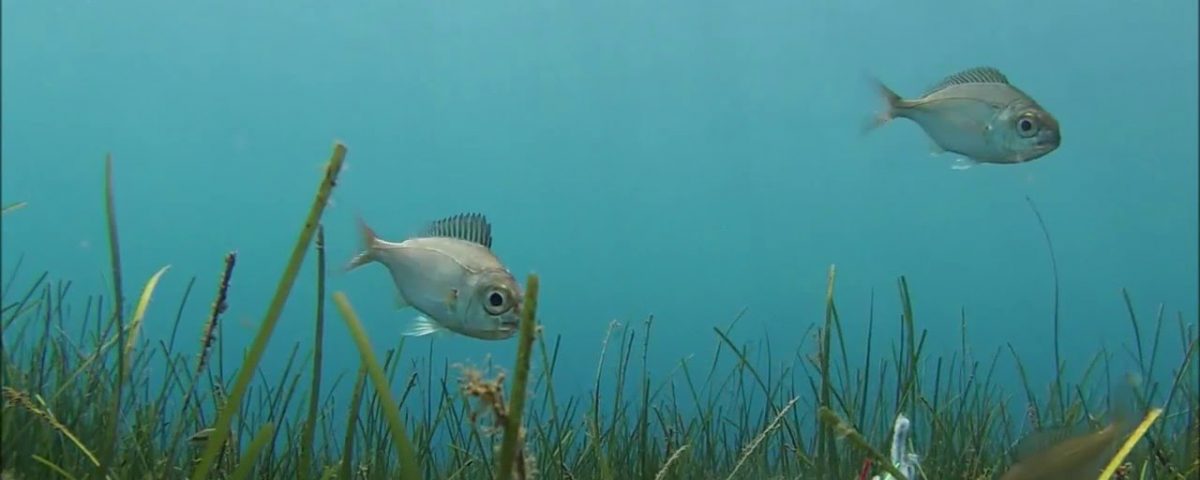Seagrass meadows help to support world fisheries productivity
बिहार में जल्द अलग बांस नीति बनेगी : सुशील मोदी
June 11, 2018
Young Indian farmers are experimenting with natural farming methods
June 12, 2018Scientific research has provided the first quantitative global evidence of the significant role that seagrass meadows play in supporting world fisheries productivity. The study entitled ‘Seagrass meadows support global fisheries production’ published in Conservation Letters, provides evidence that a fifth of the world’s biggest fisheries, such as Atlantic Cod and Walleye Pollock are reliant on healthy seagrass meadows. The study also demonstrates the prevalence of seagrass associated fishing globally.
The study, carried out in partnership with Dr Leanne Cullen-Unsworth at Cardiff University and Dr Lina Mtwana Nordlund at Stockholm University, demonstrates for the first time that seagrasses should be recognised and managed to maintain and maximise their role in global fisheries production.
Dr Cullen-Unsworth said: “The chasm that exists between coastal habitat conservation and fisheries management needs to be filled to maximise the chances of seagrass meadows supporting fisheries, so that they can continue to support human wellbeing.”
Seagrasses are marine flowering plants that form extensive meadows in shallow seas on all continents except Antarctica. The distribution of seagrass, from the intertidal to about 60m depth in clear waters, makes seagrass meadows an easily exploitable fishing habitat.
Dr Unsworth said: “Seagrass meadows support global fisheries productivity by providing nursery habitat for commercial fish stocks such as tiger prawns, conch, Atlantic cod and white spotted spinefoot.”
The authors also explain how seagrasses support fisheries in adjacent and deep water habitats, by creating expansive fishery habitat rich in fauna, and by providing trophic support to adjacent fisheries. Seagrasses are also described to support fisheries by promoting the health of connected habitats (e.g. Coral reefs).
The research article examined the links between seagrass and fisheries and the need for an integrated approach to their management governed at local, regional and international levels. The research presents a series of policy-relevant observations and recommendations that recognise the role of seagrass in global fisheries.
- Seagrass nursery habitats for fish stocks. This research highlights the need to expand research into nursery habitat links to mature exploited fish stocks. Large-scale international strategies such as the European Union Fisheries Policy need to formally acknowledge the significance of seagrass meadows (and other habitats) as nursery grounds from which off-shore fisheries are stocked, says Dr Unsworth.
- Seagrass as key fishing grounds. Seagrass meadows provide a fishery resource that is directly exploited by small scale subsistence and artisanal fisheries as well as large scale commercial enterprises but in many parts of the world, seagrass situated fisheries are often unreported and unregulated and more needs to be done to record this vital resource, says co-author Dr Nordlund.
- Seagrass provides shallow water habitat for harvesting invertebrates. Gleaning, fishing in water shallow enough to walk in, occurs around the globe. Seagrass invertebrate fisheries provide a source of essential protein for some of the most vulnerable people in tropical coastal communities., says Dr Nordlund. Invertebrate gleaning activity is expanding globally and although it’s a significant global activity, often conducted by women and children, it is not usually included in fishery statistics and rarely considered in resource management strategies are commonly unreported, unregulated or poorly enforced. This substantial and widespread fishery needs to be considered with regional and local management planning.
- Seagrass trophic support for fisheries. Seagrass meadows export vast quantities of living material, organic matter and associated animal biomass. This can benefit a range of near and far shore fisheries. Seagrass can also subsidise whole food webs in the deep sea benefiting larger fisheries productivity.
- The potential value of seagrass meadows for food security. The potential value of seagrass meadows in supporting food security remains largely underappreciated, says co-author Dr Cullen-Unsworth. In particular there is disparity between the significant economic benefits supplied by the seagrass nurseries and the poor levels of funding and management afforded to prevent seagrass degradation. Fisheries modelling and management approaches tend not to consider the functional role of shallow coastal seagrass in supporting fish stocks.
Dr Unsworth said: “The coastal distribution of seagrass means it is vulnerable to a multitude of both land and sea based threats, such as land runoff, coastal development, boat damage and trawling. There is a global rapid decline of seagrass and when seagrass is lost there is strong evidence globally that fisheries and their stocks often become compromised with profound negative economic consequences. To make a change, awareness of seagrasses role in global fisheries production must pervade the policy sphere. We urge that seagrass requires targeted management to maintain and maximise their role in global fisheries production.”
Story Source: provided by Swansea University
—————————————————————————————————————————————–


